You wish to buy a camera to make the most of the course on offer, but there are so many options! How does one decide?
Our Photography Tutor explains why you should consider a second-hand camera and shares the most important things to check before buying a used DSLR camera.
Why & how to buy second hand ‘Full Frame’ (FF) DSLR cameras
Entry-level DSLR’s are clever but compromised - they have small sensors (not megapixel count but physical dimensions), and bundled low-quality zoom kit lens.
My considered opinion, for a given budget, is to buy a second-hand Full Frame DSLR rather than a new ‘cropped-sensor’ alternative for similar money.
For this article, we will consider the offerings from Canon, and to some extent Nikon, in 2021, as they have the largest systems and being the market leaders have sold so many units that the second-hand market is buoyant & good value. There’s no real difference between Canon & Nikon, but being a Canon user I lean towards them.
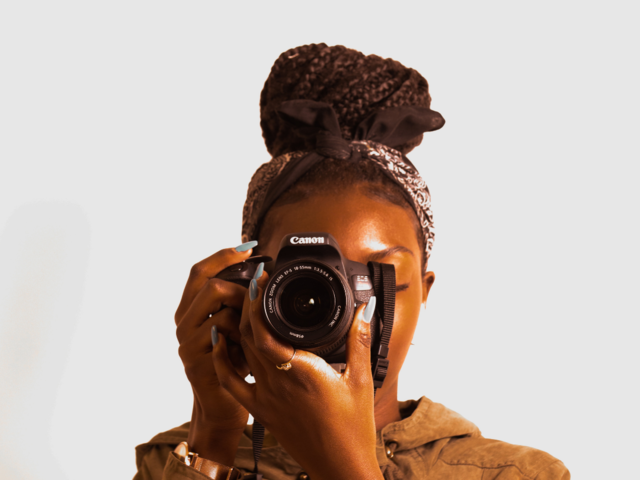
Image: Pexels.
The Biggest Myth in Digital Photography: MegaPixel (MP) Count
Ever since digital cameras have been available the Marketeers have shouted about ever-increasing MP count, as though it’s a reflection of image quality and that the higher the number the better. This isn’t true. All that MP represents is how big an enlargement can be made, not the quality of the image.
The sweet MP number is ca 25-35 mp (which is still absolute overkill for web use). 50 mp is on the whole unnecessary, their images are so data-heavy that you will need a too fairly recent and powerful computer for post-production. Colleagues of mine who use ca 50mp cameras tend to set them to shoot at ca 25mp anyhow.
What is a ‘Full Frame’ DSLR?
Full frame refers to the size of the camera’s digital sensor, being based upon the dimensions of the traditional 35mm negative.
Why are ‘Full Frame’ cameras better?
1. Full Frame cameras are aimed at the Professional market, as a result, all aspects of the camera are built to a higher level (on the whole) than their cropped-sensor counterparts.
2. As the sensor is comparatively larger than their cropped-sensor counterparts they can achieve a shallower depth of field (at a given aperture), so potentially more creativity.
3. The larger sensor tends to have higher Image quality (unrelated to MP count).
4. They have superior image quality in low light conditions.
5. There are more lenses available for such a Pro’ spec camera.
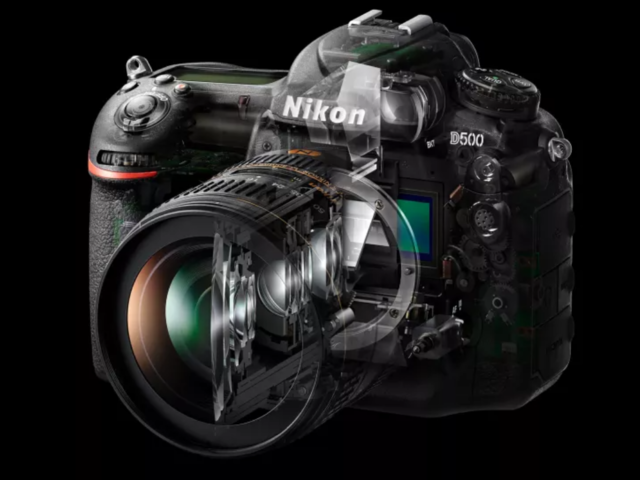
DSLRs like the Nikon D500 have a mirror inside the body to reflect the image up into an optical viewfinder. Image: Digital Camera World.
Why are Full Frame cameras bigger than their cropped sensor counterparts..?
Because of the sensor size (and so the corresponding internal flip-up mirror’s size and pentaprism), full-frame DSLR’s have to be proportionally bigger than crop-sensor cameras. They are bigger than mirror-less cameras as such don’t have ‘mirrors’ or ‘pentaprisms’.
DSLR’s vs Mirrorless
Mirrorless cameras have more bells and whistles, none of which will make the difference between a good and a bad photograph. If anything, their added complication can be a distraction. The manufacturers introduced them supposedly because they are smaller and lighter than DSLR’s (they have no internal flip-up mirror or pentaprism). However, the real reason is that they are essentially solid-state machines (no mechanical internals) and so cheaper to make (though currently more expensive than DSLR’s due to the Manufacturer’s need to recoup research and development investments).
And if the marketeers win they will have convinced the market that we should sell up our existing DSLR’s and invest in this new technology. This subsequently means that the second-hand DSLR market is extremely good value.
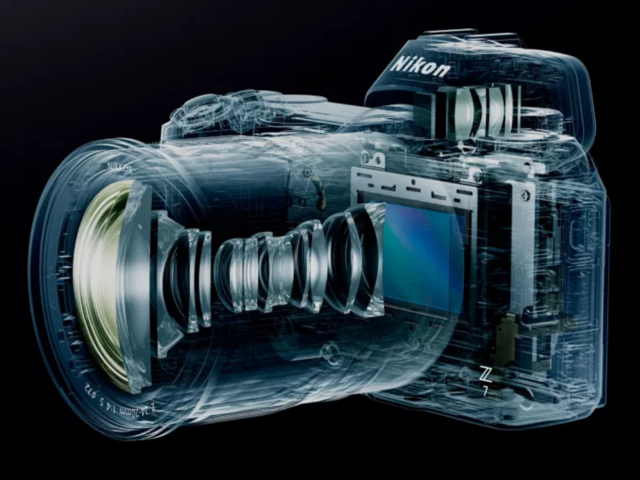
Mirrorless cameras have no such mirror. The image passes straight through to the sensor at the back of the camera which passes a live 'feed' to an electronic viewfinder. Image: Digital Camera World.
The main thing to consider when buying second-hand?
Wonderfully, most full-frame cameras actually record how many photographs (shutter-releases/actuations) they’ve taken. So just like the mileage of a car, it is straightforward to ascertain the extent of use a given camera has had. The manufacturers tend to guarantee their ‘shutter/mirror mechanism’ for ca 150,000 plus actuations (many have experienced their cameras achieving double this without problem). To put this in perspective, a very very keen amateur photographer may take ca 10,000 images a year (ca 200 images per week, ca 30 per day), so you get the idea, it takes some time to shoot 150k.
Aim to find a camera with less than 40,000 actuations, there are plenty available, many with less than 10,000!
Full Frame Cameras are built like tanks, designed as work-horses, things only go wrong if they’re dropped (and even then they’re pretty robust!).
Other second-hand buying considerations
What you are ideally looking for is a camera with light amateur use. Imagine, someone bought such a camera, hardly used it, it then sat in a cupboard for a year or so before they decided to sell on.
Ideally, you want to buy from someone who kept the original box as it says something about the previous owner and their care of ownership (however this isn’t vital).
Do not buy from someone who says it was their professional back-up camera, or their main Pro camera as there are so many light amateur usage units available. Pro’s may well look after their kit, but they certainly use them too. Be suspicious of listings with little or no discussion regarding its ownership and/or previous usage.
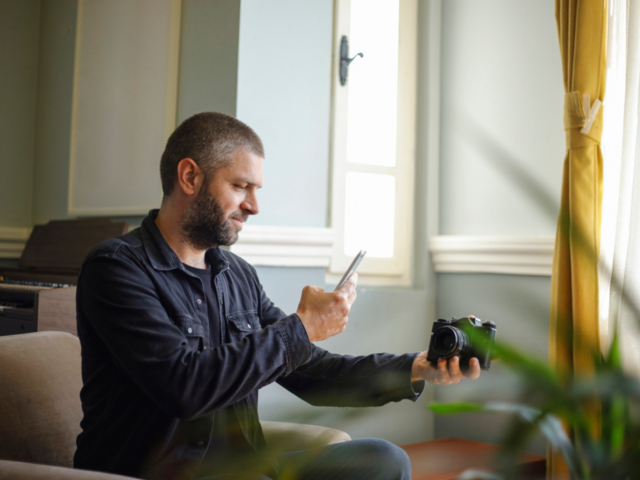
Image: iStock.
Where to buy second-hand?
My first choice is eBay: If you’re unfamiliar with it’s finer details this is what I’d be looking for:
1. That the seller publishes the shutter count. If they don’t it’s probably because it’s quite high. If it’s low, the seller will certainly be shouting about it.
2. Is it boxed? As this indicates a level of care and consideration. Also, the suggestion that the current owner has had it from new and so provenance.
3. Read between the lines - Is it being sold by someone who hardly used it? Thought they’d get into photography and then simply shelved it? You are looking for clues suggesting amateur usage.
4. With the marketing push for Mirror-less, people are selling up their DSLR’s - so they can be very good value.
5. Listings will state whether the seller will accept you ‘returning’ the item if not what was expected. Those who don’t take returns can include scammers shifting tricky kit.
6. eBay is on the side of the buyer, as is PayPal - good protected.
Camera Shops: These can be good especially as they will give a guarantee, but a given camera will be a little more expensive for such protection. Watch out for the camera shop salesperson who will recognise any ignorance and maybe sell you something you don’t need or didn’t want!
GumTree & FaceBook Market Place: I would only consider these avenues if I could meet & see the item and the seller in person. These avenues tend to be the cheapest markets, often people who want to sell things quickly with minimum effort to themselves.
Cameras I would recommend
As mentioned I shoot Canon. However, Nikon cameras are pretty much the same. I like Canon/Nikon* over any other alternatives due to the size of their systems and consequently their value for money, both new & second hand.
My Cameras of choice are from the Canon EOS 5D range, the mark I through to mark IV. I’ve owned them all. Currently, for commercial work, I use both my mark III and IV. Depending upon your budget, in terms of second hand, I would recommend either the mark II or III. There are differences between them but not the difference between a good and a bad photograph. The current 5D is mark IV, an excellent camera, but more expensive.
The Canon 6D mark I and II are also excellent, a little smaller & less money too.
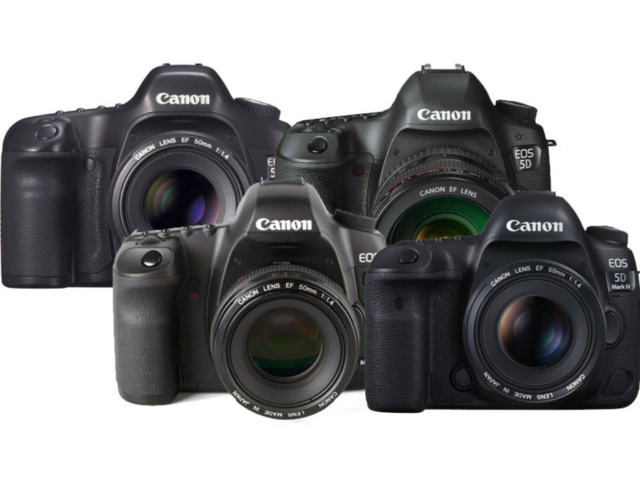
Canon EOS ED range - mark I through mark IV. Image: ephotozine.com.
A note on lenses
The cheaper Crop Sensor designed lenses will not work on Full Frame cameras. These kit lenses are also terrible.
Full Frame lenses are relatively more expensive but are so very much better, there’s no real comparison. If I were to have only one lens it would be the standard 50mm, then I’d get the 35mm & thirdly the 85mm. Of these three, the base model 50mm f1.8 is really quite good and a bargain new.
Alternatively, I would have a Zoom which covers these focal lengths, typically for Canon, it’s either the 24-105mm f4 or the more expensive 24-70mm f2.8. Either of these lenses would just about cover most commercial photographic requirements. I’d buy these second hand too, whilst considering the second hand buying thoughts suggested above.
With lenses, there’s no indication of use other than visual condition. But ensure the seller confirms that there is no fungus in the lens, no oil on the aperture blades and no internal fogging. It’s acceptable to have dust within the lens because it doesn’t affect image quality.
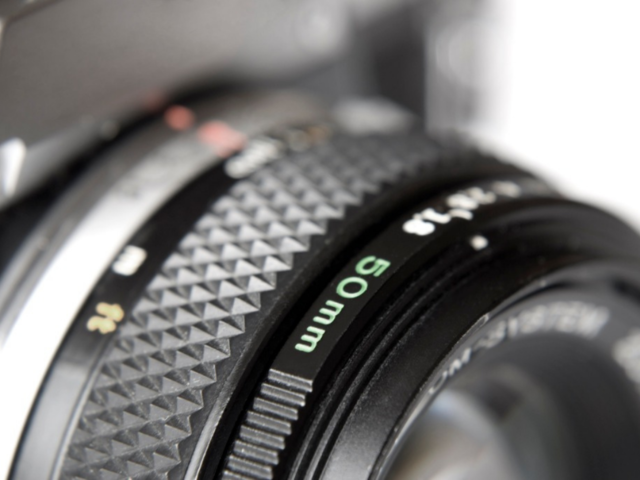
Lens model 50mm f1.8. Image: photographytalk.com.
Conclusion
Put in perspective, it’s possible to buy, for example, the Canon 5D Mark II + 24-105mm f4 for ca $883 and upwards, roughly the cost of a new entry-level model. If it were my money I’d aim for the same lens on the mark III.
If you are looking for more photography guides and tips, take a look at our other articles.
And if you wish to take your photography skills to the next level, we have the right course to help you!
*Nikon: Over the same time period Nikon have produced their ‘D’ series in competition with Canon’s ‘5D’ series. For example, the Nikon D700 vs Canon’s 5D mark II, & the D800 vs 5D mark III. They’re about the same price second hand, the difference between them is MP count, Nikon having ca 35% more. Remember, that’s nothing to do with image quality, not the difference between a good and a bad photograph, simply how big of an enlargement can be achieved in the printing stage.
